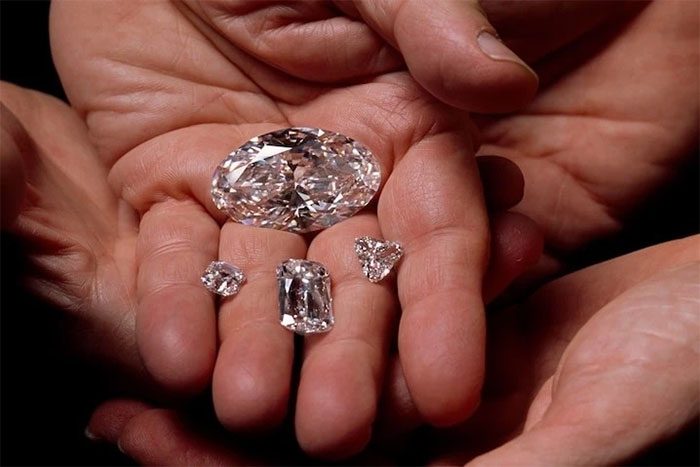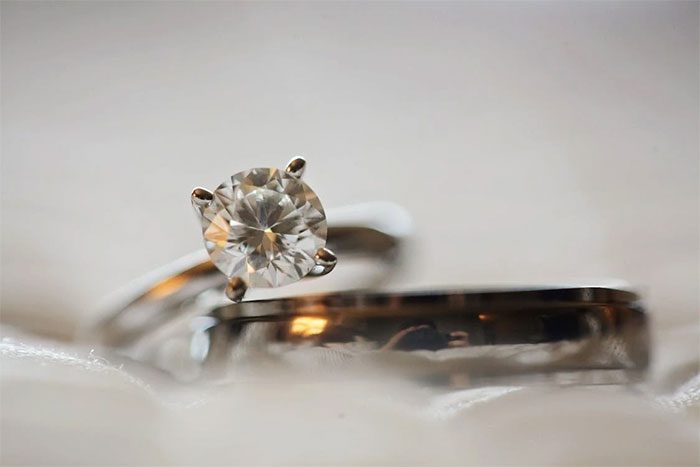Diamonds have always been marketed as eternal jewelry, symbolizing love, but in reality, these claims are products of marketing from the previous century.
When Gladys Babson Hannaford arrived at Florida State University in 1960, her lectures were not exactly part of the curriculum. And Hannaford herself, known as the “Diamond Lady”, was not an ordinary lecturer.

Diamonds are considered symbols of eternity in love. (Photo: Denis Balibouse).
This woman was a diamond expert who held hundreds of “educational” talks about gemstones. She was recruited by an advertising agency with a simple yet ambitious mission: to make American women desire diamonds.
At that time, diamonds were not rare, and the price of this gemstone was clearly listed by the global diamond corporation De Beers.
In the U.S., using diamonds for engagement was not a long-standing tradition. Nevertheless, Diamond Lady Hannaford preached that diamonds were gems with historical and emotional significance.
“The eternal permanence of diamonds is linked to enduring love,” she told her students, encouraging female students to ask their future fiancés to propose with a diamond ring.

A strong marketing campaign made diamonds highly sought after despite their high price. (Photo: National Geographic).
Why Are Diamonds So Popular?
Until the 19th century, the Indian subcontinent and South America were the two main sources of diamonds for the world. This gemstone had been known since ancient times, but it wasn’t until the 13th century that they became popular in Western Europe, according to National Geographic.
The process of cutting diamonds emerged during the Renaissance, when craftsmen used tools to shape rough, unpolished stones, making them sparkle and suitable for jewelry.
Once polished, diamonds became breathtakingly beautiful and very rare. They became a symbol of wealth and luxury because very few people could afford to buy them.
Diamonds were first set in engagement rings in 1477 when Archduke Maximilian of Austria gifted this ring to Queen Mary of Burgundy.
In the same year, one of the advisors wrote a letter advising the archduke to create a gold ring inlaid with diamonds for the engagement.
Many centuries later, mineralogist George Frederick Kunz believed this item was evidence that diamond engagement rings were fashionable among royal families at that time.
By the 1860s, diamonds were discovered on the farm of Johannes and Diederik de Beer in South Africa. These two later sold the diamond mine to a British company.
British businessman and politician Cecil Rhodes took over this mine and went on to buy newly discovered diamond mines, thereby consolidating the diamond industry in the region and creating the De Beers diamond empire.
As a result, by the early 20th century, De Beers controlled nearly all the diamonds in the world.
However, this also posed a new challenge for the diamond industry. Since the discovery of diamond mines in South Africa, the supply of this gemstone increased dramatically.
De Beers alone held up to 90% of the world’s diamonds. This put the company in a difficult position on how to maintain the value and reputation of diamonds, especially at the beginning of the 20th century when the Great Depression forced many people in Europe to tighten their belts.
Eventually, De Beers and its then-owner, Ernest Oppenheimer, targeted the U.S. as a potential market. However, the challenge was that diamond rings were not yet the standard for engagements in this country in the early 20th century.
Thanks to the creativity of the advertising company N. W. Ayer & Son, De Beers convinced Americans that diamonds were a necessary luxury item, symbolizing eternal love, thus justifying their high prices.

Diamonds have been around for a long time, but it wasn’t until the 20th century that they created a global frenzy. (Photo: Pexels).
Are Diamonds Forever?
By the 1940s, this advertising company began to “attack” American consumers with images of diamonds and stories about their rarity and eternal symbolism.
Advertisements in magazines featured a series of celebrities wearing diamond engagement rings. The company even loaned diamonds to Hollywood stars for jewelry collections as a promotional strategy.
Not stopping there, they sent representatives like Diamond Lady Gladys Babson Hannaford to women’s clubs and even high schools to “show off” the sparkling gems, thereby “planting” the idea that diamonds and marriage had a strong connection.
Royalty also participated in this “promotion” when Queen Elizabeth II visited the De Beers diamond mine in 1947 and received a diamond necklace from the South African government along with a 6-carat diamond from De Beers.
The queen’s engagement ring also featured sparkling diamonds. Subsequently, this iconic ring created a diamond craze in many places.
This advertising campaign was so successful that a copywriter coined a slogan for diamonds in 1948, which is still used today.
That year, Mary Frances Gerety, an employee of N. W. Ayer & Son, created the slogan “A Diamond is Forever.”
Analysts noted that this slogan was concise and conveyed the message that a diamond ring should not be bought and sold again because it holds sentimental value for couples. Consequently, diamond distributors encouraged customers to buy more diamonds if they remarried multiple times.
De Beers was ambitious in aiming to make diamonds an essential and must-have item, regardless of income and financial pressures.
That became a reality.
According to the World Diamond Council, global diamond sales reach over $72 billion every year, with the U.S. being the world’s largest diamond market.
However, today De Beers can no longer expand as it once did due to the emergence of new diamond mines, increased competition, and especially the advent of synthetic diamonds that are “cultivated” in laboratories.




















































